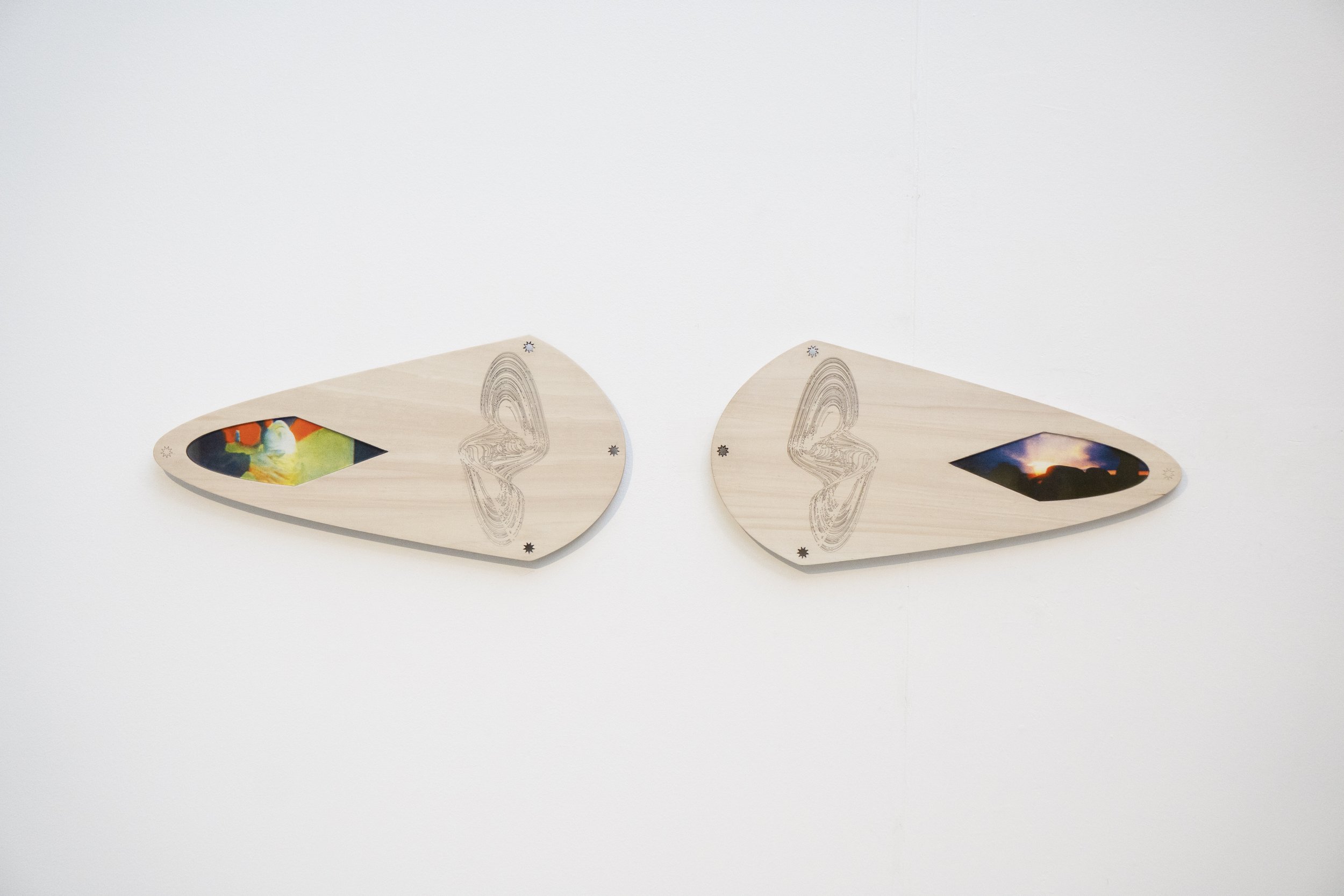
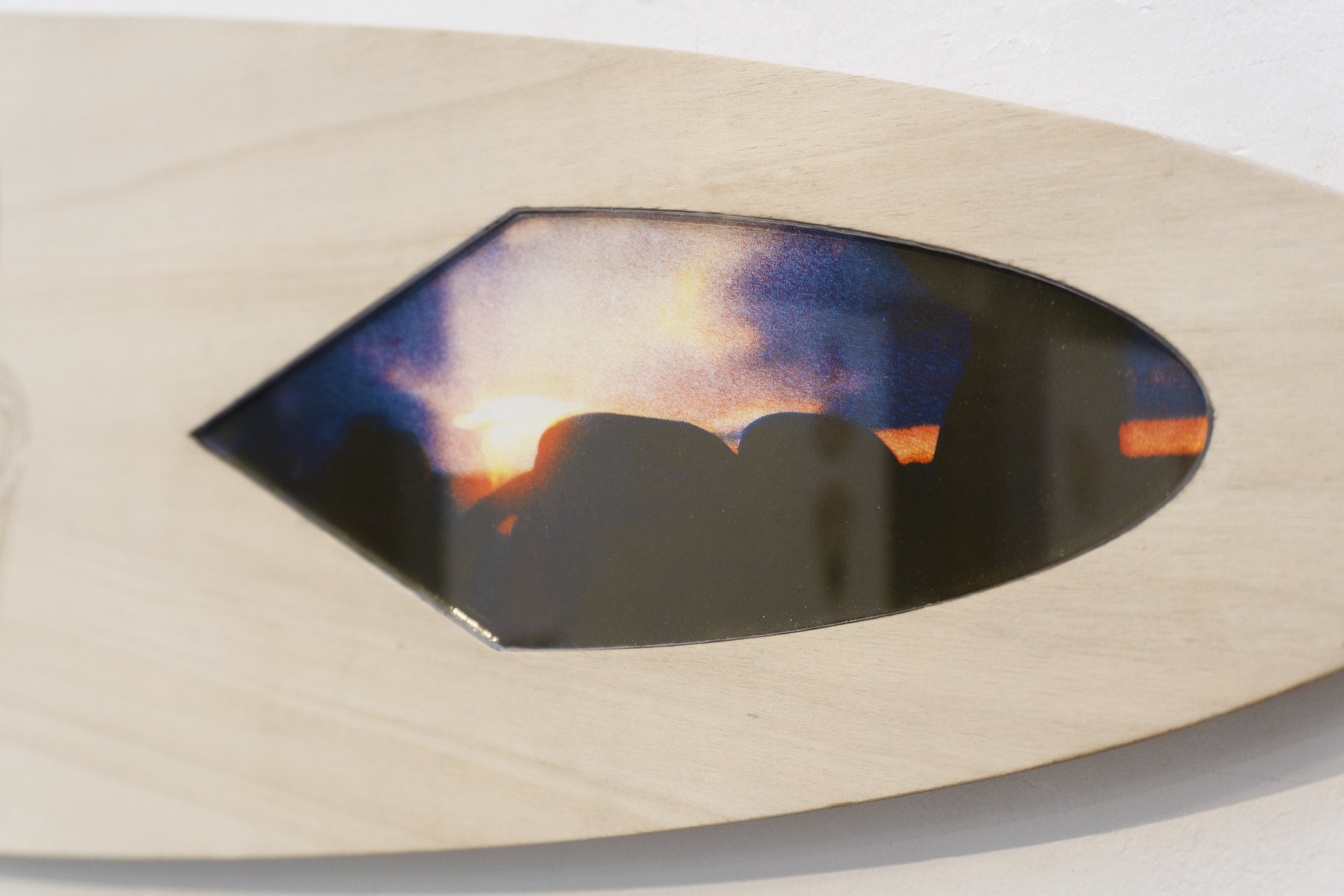

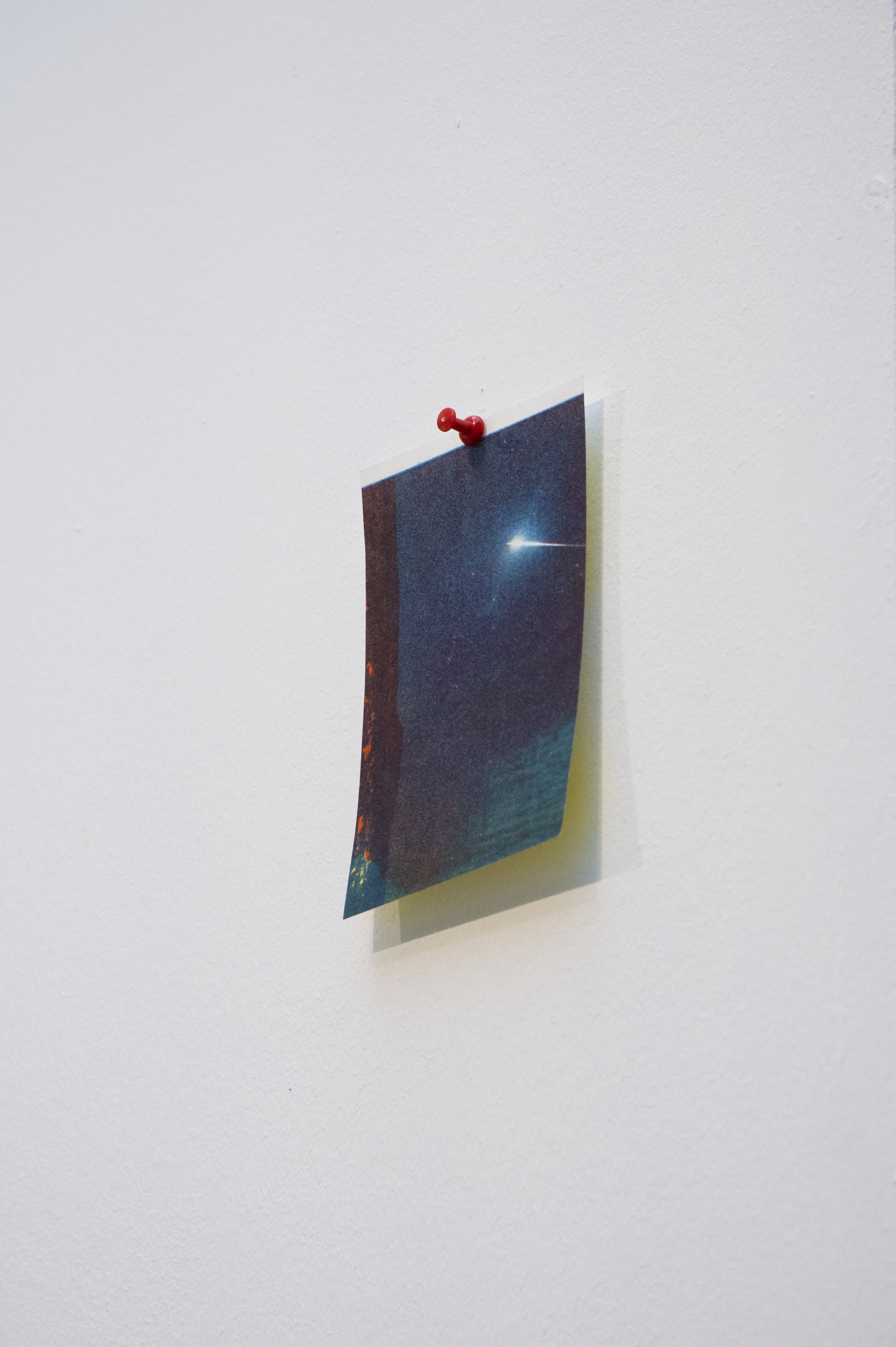




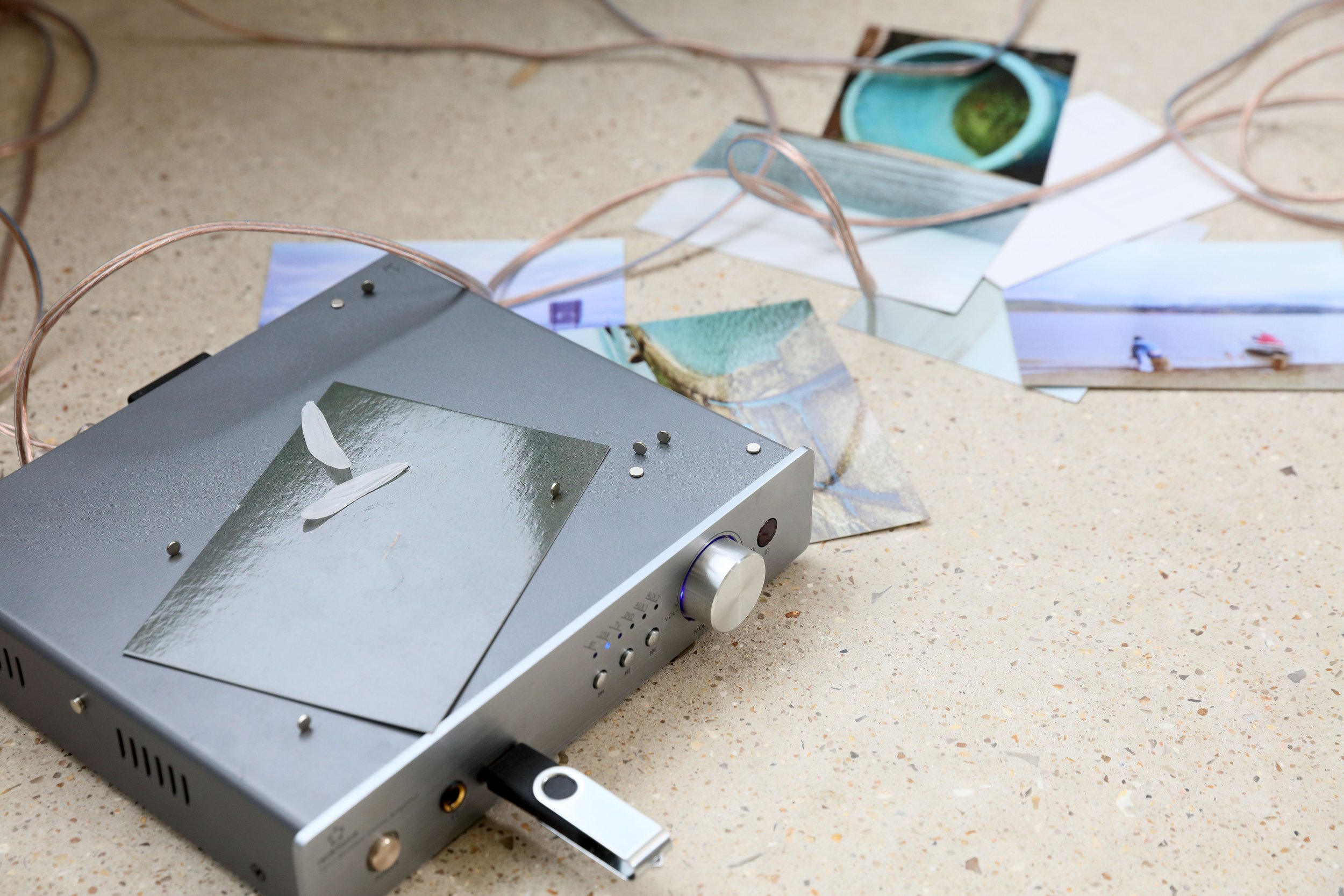

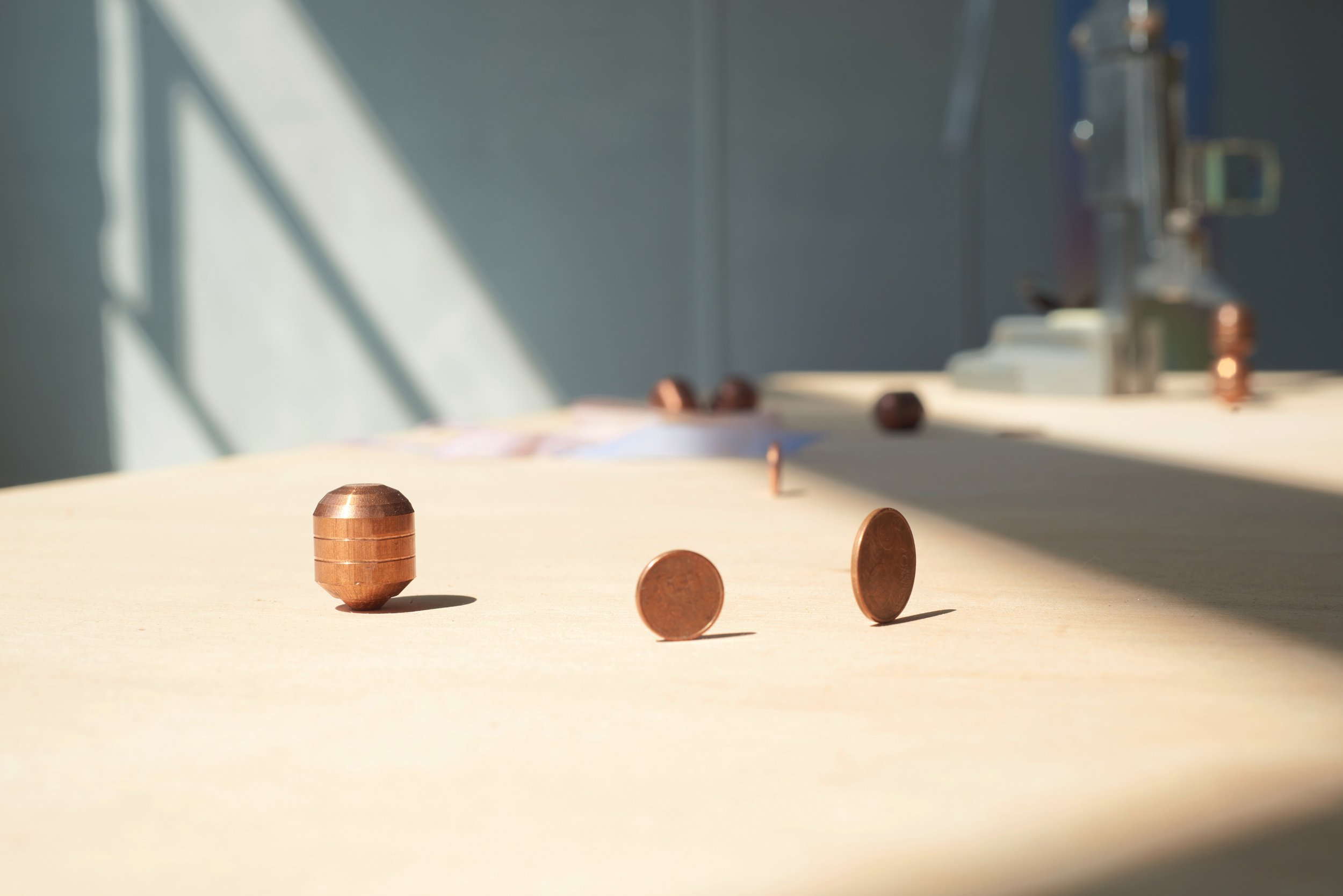
THE INTERVIEW
Marine Ducroux-Gazio
1. Could you share a bit about your background and what led you to start your art practice?
I was born in France, in Paris, and I studied in many places, but to resume it quickly, I graduated with a master's degree at the École des Arts Décoratifs de Paris. It was a master’s in sculpture, but I discovered video making at the end for my diploma, and I really felt like it's something I wanted to explore. So, I decided to do two more years at Beaux-Arts de Paris, where I’m currently in Angelica Mesiti’s video atelier. There, I mostly study audiovisual production that I still combine with my work in space and sculpture.
Even though I am currently living and working in Paris, I've also been making and showing my work in several places like Nantes, Mexico, Tokyo, or Amsterdam.
2. What themes does your work explore?
My work is first of all sculptural and based on installations, but I think it's also very close to poetry and cinema in its process of being developed. I realized that the main thing I'm working on is the deep loss of magic and meaning in our world, especially because of capitalistic, occidental ways of seeing things, Cartesianism, and post-industrialism. I try different methods to explore these things in a very sensitive and narrative way, but without using a verbal language. I work a lot on big figures of our collective Anthropocenic imagination, like the Businessman, but also Prometheus or Icarus—figures that are still pillars of our occidental culture, even if they come from very old myths. For example, I made a project about Icarus, who is an archetype of hubris: he wants to reach the sun, and metaphorically the story is also about controlling or reaching something you cannot control nor reach.
So, it's hard to resume, but I think I explore sensitivity and narrations as a way to get over the loss of meaning. I also tend to explore the border between humans and non-humans or between the so-called rational and irrational. I was raised in a very imaginative family, and I think I work with a lot of tales and metaphors to develop new narratives that make sense for me and give me comfort because sometimes I'm lost in this world that is experiencing a total loss of magic.
I would say I think it really explores the borders and how everything is rationalized, whereas, to survive, we need to re-enchant them in a way, and this is what imagination does. I don't really have big themes, but I would say tales, books, cinema—everything that is very narrative—is a big source of inspiration because I love to create something that's close to tales. Tales are something we crave and create all the time as humans. I think, as an artist, it's really interesting to create new ones as we live in a very complex and changing world. I'm trying not to work from a moral perspective—my goal is more about creating new ways of feeling and understanding, to open up new perspectives on meaning.
Q: When you say sensitivity, do you mean in an emotional and empathetic sense or more in a physical and tactile way?
Do you know Emanuele Coccia? He made a very beautiful book about sensitivity. He talks about sensitivity as the space that's there and that it’s like a vibration of things that has a cosmological function because it actually allows you to see things, to feel them, to want to reach them, and to be with them. So, if you're sensitive to a color or to a flower, it's like being attracted by the vibration of the being, and this is something that tends to disappear in a post-industrial world where things are designed to make you believe that they are inert in a way.
Q: Do you think that vibration you're talking about is the sense of magic that we've lost?
As I said, I've been quite obsessed with the loss of magic, and even as a child, it would really make me sad. Not only magic as a human thing, but also the magic of a breathing forest and how this is taken away when they’re razed and replaced by a shopping centre.
Now, I'm working on the figure of the Rainmaker, which is typically from the United States. If you take the French translation, it only means someone—generally a magician—that can make rain fall, but in the United States, it also means someone that can make business flourish. And I'm working on this idea of how “magic” is now used in a financial sense—this is exactly what Isabelle Stengers talks about in her book Capitalist Sorcery.
3. Where do you find inspiration for your work?
I watch a lot of movies and read a lot, sometimes more than I see exhibitions. I would say books and movies are my main inspiration: for example, I read a lot of science fiction, which I really enjoy because you have beautiful metaphors, and then I’ll use them—and often, my pieces are named after books. The Rainmaker idea also came from a German book, Hermann Hesse’s novel The Glass Bead Game. It's often like that: I read something, and then, analogically, it makes a new idea in my head, even though sometimes it takes years to reappear in a form that convinces me.
4. How has your work evolved over the years, and what has influenced these changes?
I think my work became more precise when I learnt industry-specific techniques at the École des Arts Décoratifs, and this enabled me to propose increasingly ambiguous forms—who made them, do they have a role, etc. This ambiguity allows us to create narratives that go beyond the expected meaning of our ultra-designed world. The gradual inclusion of video has also been crucial in clarifying certain ideas and providing a rhythm for the viewers of my work.
5. What is the project you’re most proud of to date?
I would say to have begun video is something I'm really proud of because, in a way, it was risky for me. I began late, but I think it's one of my expression facilities where I can really trust my intuitions and say what I have to say. It is also a medium that allows for very direct emotion, particularly through the use of sound.
Q: What kind of video work would you say you're working on right now?
For now, I have three video projects. I just finished one about the Rainmaker as an illusionist: I made a video with a magician that doesn't do magic. I am pursuing the second part of it, which will be more about the incapacity to control rain and the necessity to wait for it. It's always very simple ideas I have, and then it can be like very fixed sequences. It’s kind of conceptual—sometimes it's close to performance. For example, in this video, I asked a magician to make me a show without making magic. So he just shows me the gestures, and there is an ambiguity because he's dressed as a businessman and nothing is appearing. But the gestures are so beautiful that you end up letting yourself be bewitched by it. It is a video as simple as it is complex, like tales are in a way.
Q: Were you exploring the Rainmaker when you were doing sculpture or is that a newer idea?
I began when I was reading Hesse’s novel last summer, and it became quite obsessive. Last year, I was already working on weather because I think it's also a key question of the border between human and non-human, especially with climate change. For example, last year I began a docu-fiction video project with a three screen installation, which talks about the sea’s “border” and a ghost city that’s haunted by the waves and sand. In any case, I think that the themes and motifs I explore go in cycles and come back again and again in new forms each time.
6. Can you walk us through your creative process and how you bring an idea to life?
I do not really plan it. I think I first of all need to nourish myself freely—like to take a walk or read, have a conversation, bathe in the sea, see exhibitions or movies… I also use Image Atlas a lot and write a sort of a research journal.
And then the ideas—I think they are inside you, but you can’t find them if you only focus on trying to catch them. You find them by looking at other things.
7. Do you see yourself staying in Paris long-term, or are there other cities that inspire you to work there?
I've been working in other cities, but for the moment, I think I will stay here. I like Paris. I also have my family and friends here, and it takes a long time as an artist to fully settle into your surroundings. I think you mostly choose the place where you want to work because you have your friends and network around.
8. What would you like to accomplish in the next few years?
I would like to have the chance to continue my work.
9. If there’s one thing you hope people take away from your work, what would it be?
I love the idea of persistence of vision or retinal persistence. I think if you look at a piece of work, the moment you see it is maybe not the most important, but it’s the memory of it that stays as a part of your thoughts and sensibility. I think that's also why I’ve always been obsessed with being really precise in my work so that it can work outside of me: I want it to exist mostly in a mental, personal, dimension of our memories. I also like the idea of offering time—a slower, contemplative time. A moment outside of time with room for nuance, complexity, tenderness, and sensitivity.

